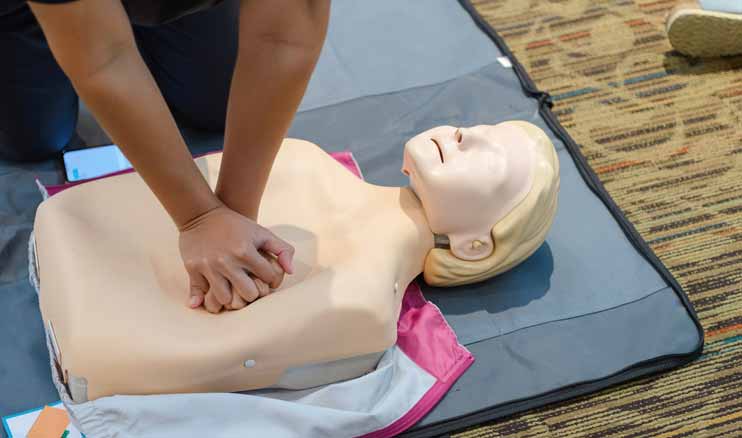Cardiopulmonary Resuscitation (CPR) and First Aid training are essential skills that can make a significant difference in emergencies. Whether at home, in the workplace, or in public spaces, having individuals trained in CPR and First Aid can be a lifesaving asset. Here are five important reasons why CPR and First Aid training are crucial:
Immediate Response to Emergencies
CPR and First Aid training empower individuals to respond quickly and effectively in emergencies. In critical moments, the ability to provide immediate assistance can be the difference between life and death. For example, in cases of sudden cardiac arrest, performing CPR within the first few minutes can help maintain blood circulation and provide oxygen to vital organs, increasing the chances of survival until professional medical help arrives. First Aid training also teaches individuals how to assess situations, prioritize care, and take appropriate actions to address injuries or illnesses promptly.
Prevention of Further Harm
First Aid training goes beyond just responding to emergencies; it also equips individuals with the knowledge to prevent further harm. Understanding how to stabilize injuries, control bleeding, and support individuals in distress can minimize the severity of injuries and prevent complications. Immediate and correct intervention can make a significant impact on the recovery process and reduce the risk of long-term damage. By having trained individuals on hand, the potential for exacerbating injuries or conditions is greatly diminished.
Promotion of a Safer Environment
CPR and First Aid training promotes a culture of safety in various environments, including workplaces, schools, and communities. When a significant number of people are trained, the overall safety of the environment is enhanced. This creates a network of individuals capable of responding to emergencies, thereby contributing to the well-being of the community as a whole. In workplaces, adherence to safety protocols and the presence of trained personnel can reduce the number and severity of accidents, fostering a safer and more secure working environment.
Increased Confidence and Preparedness
CPR and First Aid training instill confidence in individuals to take charge in emergencies. Knowing that one has the skills to respond appropriately to accidents, injuries, or sudden illnesses can reduce panic and anxiety. The training provides a sense of empowerment, making individuals more willing and able to step forward and provide assistance when needed. This increased confidence translates to a higher level of preparedness, ensuring that individuals are ready to act decisively in the face of emergencies.
Team Collaboration and Community Resilience
CPR and First Aid training promote teamwork and collaboration in responding to emergencies. In community settings, having a significant number of trained individuals creates a resilient network capable of providing immediate assistance until professional help arrives. This collaborative approach fosters a sense of communal responsibility for the well-being of others. In workplaces, employees who are trained in CPR and First Aid can work together seamlessly to address emergencies, creating a safer and more cohesive work environment.
In conclusion, CPR and First Aid training are invaluable skills that contribute to the overall safety and well-being of individuals and communities. By enabling prompt and effective responses to emergencies, preventing further harm, promoting a culture of safety, boosting confidence and preparedness, and fostering teamwork, these skills play a crucial role in saving lives and mitigating the impact of unforeseen incidents. Encouraging widespread CPR and First Aid training is an investment in the health and safety of individuals and the communities in which they live and work.
